Rhododendrons are gorgeous plants that are easy to care for and require little maintenance. They have long been the favorite of so many gardeners thanks to their spectacular flowers that will give your garden a lush and vibrant appearance.
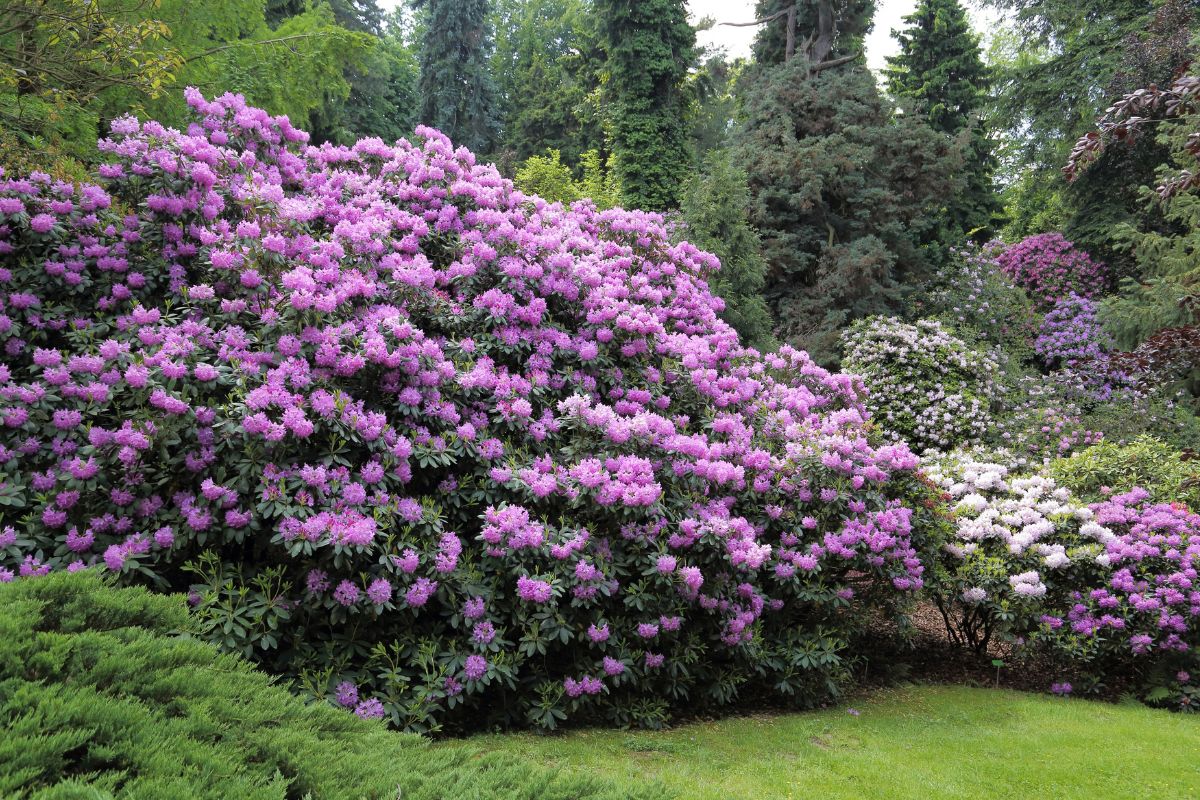
However, despite their popularity and striking features, you may encounter problems where your rhododendrons are not displaying their optimum look or producing as expected.
It could be that you inadvertently erred in one way or another. The following are some of the common rhododendron growing mistakes to avoid and how to fix them.
Jump to:
- Common Rhododendron Growing Mistakes + How to Fix Them
- 1. Too Much Watering
- 2. Using the Wrong Soil Type
- 3. Improper Planting Depth
- 4. The Type you Choose is not Hardy Enough
- 5. Lack of Watering
- 6. Exposure to Winter Wind
- 7. Incorrect Fertilizing
- Common Rhododendron Growing Problems & How to Fix Them
- 1. Yellowing of Leaves
- 2. Leaves Getting Crinkly
- 3. Rhododendrons Not Blooming
- 4. Shredded or Broken Leaves
- 5. Sunburn on Leaves
- 6. Root Rot
- 7. Brown Spots on Leaves
- Conclusion
Common Rhododendron Growing Mistakes + How to Fix Them
1. Too Much Watering
It is the trickiest part of rhododendrons growing and one of the common mistakes you must avoid if you want the best result from your plants. Too much watering does not make a rhododendron healthier but will cause it to develop root rot and curl its leaves.
Watering mistakes are why every gardener is advised to use a well-draining pot and soil. If the roots of this plant sit in damp conditions, it will attract fungus diseases called phytophthora.
You can slightly dig to check if the roots are mushy and black rather than firm and tan-colored. If it is the former, then root rot is setting in.
How to Fix Them
- There's no need to treat with a fungicide because it won't work. The best thing is to try moving the entire rhododendron to higher ground or a raised bed to see if it can come back strong.
- Are you using clay soil? It is a water-retention plant, so it would help if you apply enough compost or pine bark to the new planting zone.
- Avoid growing another rhododendron in the old spot, as the fungus will attack the new plant; it doesn't matter if it is specially bred to resist disease.
2. Using the Wrong Soil Type
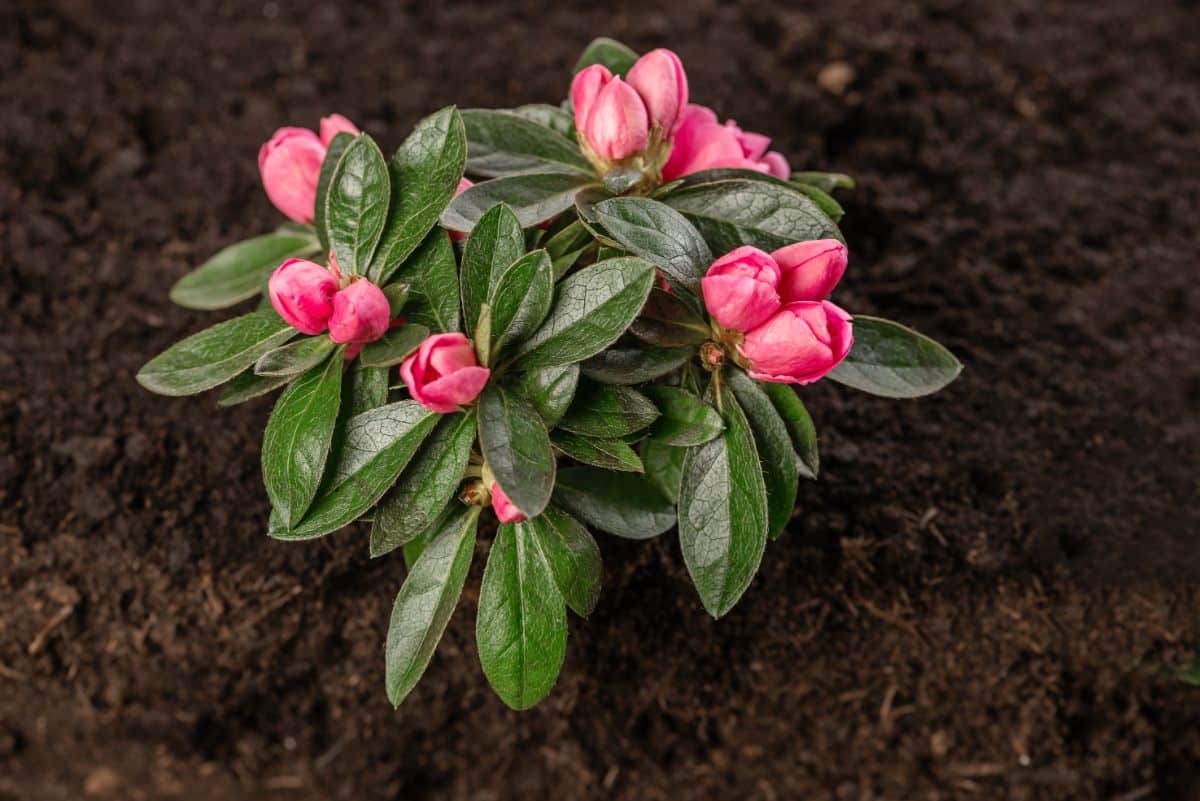
Another reason why most gardeners fail in their bid to grow a very successful rhododendron plant is using the wrong soil type. Just its close relative (azalea), a rhododendron is best planted with acidic soil between pH 5.0 and 6.0.
Do not be misled into thinking that you can buy a rhododendron seed and use any soil to grow it; in the end, you expect better results. Every plant has its soil specification for which it will thrive and produce the best result if utilized. Generally, the wrong soil type can destroy your plant.
How to Fix Them
- The best way to know your soil's pH is by purchasing a simple home test kit at an affordable rate.
- If your test shows your soil is alkaline, use a compact variety and plant your rhododendron in pots in ericaceous compost, as reducing soil pH is not easy.
- Ensure the soil is well-drained but rich in acidic organic material, consisting of composted tree bark, leaf mold, decomposing conifer needles, or composted bracken.
3. Improper Planting Depth
Another common rhododendron growing mistake among gardeners is planting their rhododendrons too deeply. These species are surface rooting plants, and growing them too deeply will be costly.
Burying the roots under the soil will kill the plant, as roots need some breathing. Ensure the rootball's top remains at or below the soil surface.
How to Fix Them
- As we discussed earlier, ensure the top of the rootball stays at or just beneath the soil surface.
- Do not put deep mulch on top of the rootballs. In other words, the mulch should be applied without covering the crown of your plant.
4. The Type you Choose is not Hardy Enough
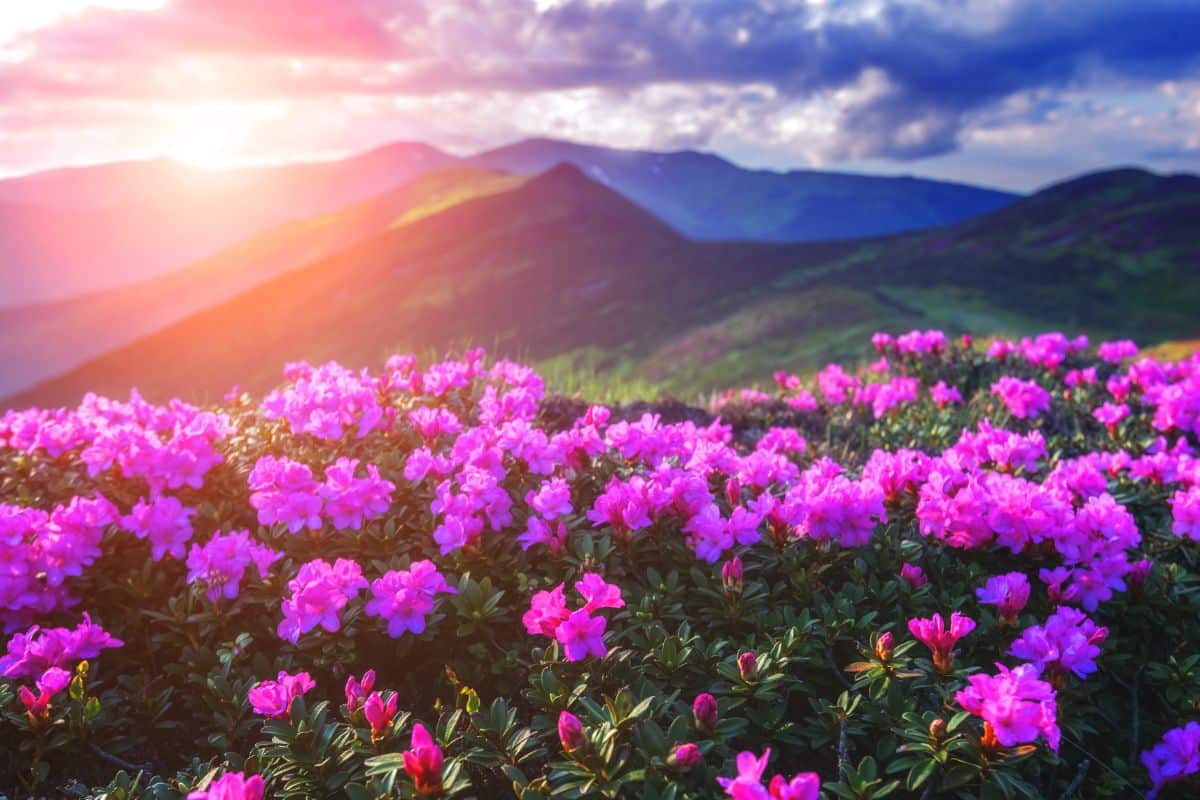
Before you choose any rhododendron variety to plant, make sure it will go well with your region. Therefore, checking for hardiness rating and bark split is essential, as it will help keep the plants safe in regions where frost is most severe.
How to Fix Them
- You must always check your plant's hardiness nature or rating.
- Even though your plant will recover from autumn frosts, a severe case of barksplit can kill young plants, and it often takes 6 to 9 months before you notice any disaster. So, always check the stem at the base of the plant.
5. Lack of Watering
Watering is often the trickiest part of growing all plants, including rhododendrons. Just because you must not overwater doesn't mean you should be underwater or shouldn't water at all. Even though it is not as disastrous as overwatering, it would still result in issues, most likely wilting. Rhododendrons require regular watering but avoid overwatering.
How to Fix Them
- Since rhododendrons possess a relatively shallow system, they will require regular watering. So, if it isn't raining, use your sprinklers or go for a hose to water them appropriately.
- Check if you have up to two inches of mulch around your rhodies as it helps retain moisture in the soil.
- If possible, you can use pine bark mulch, which creates acidic soil rhododendrons.
6. Exposure to Winter Wind
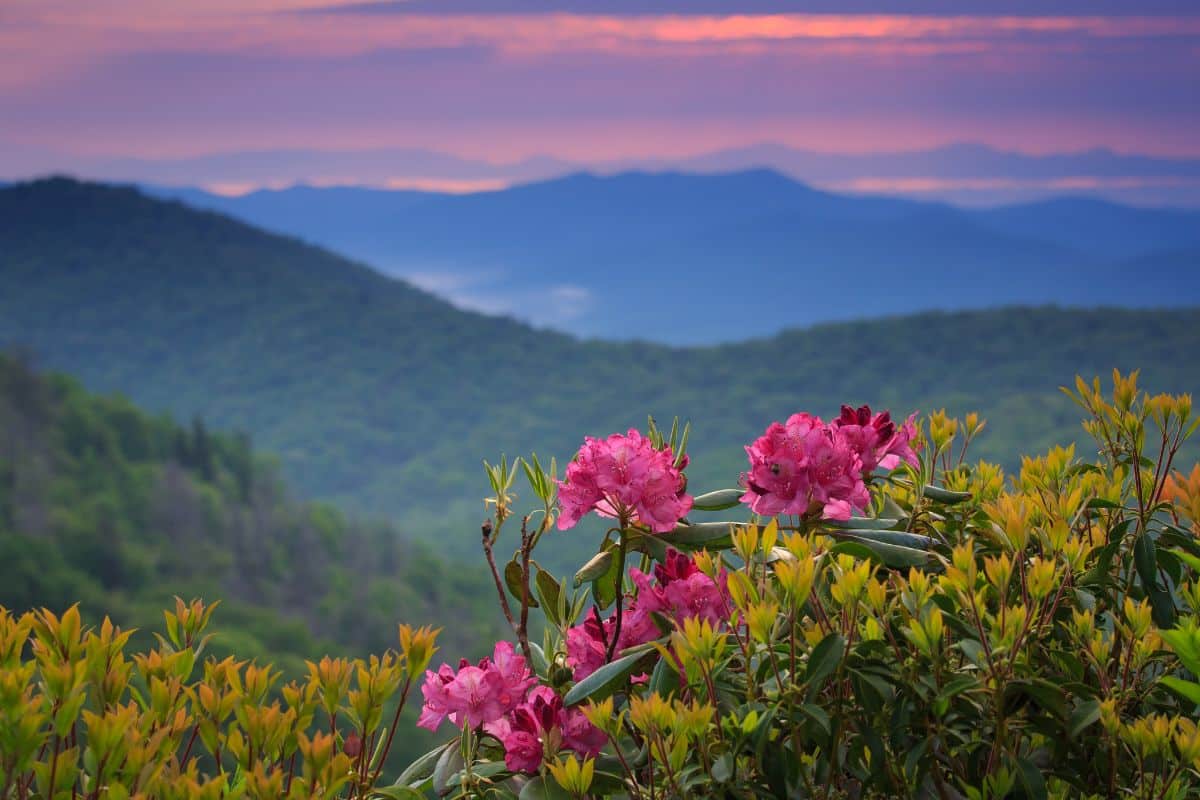
Exposing your rhododendron to the excess cold wind of the winter is a huge mistake, as it can curl its leaves inward, so less leaf surface is displayed. Once this scenario occurs, it is a sign that the plant is attempting to prevent water from evaporating out of its leaves.
How to Fix Them
- Whenever you notice the temperature above freezing, you should provide your rhododendrons with a slow and steady trickle of water until the soil starts feeling damp, around 8 to 10 inches below.
- Maintain the required moisture in the ground by applying about two inches of mulch. Be sure that the mulch area covers a spot beginning two inches away from the trunk and going out past the last parts of the branches.
- In the following fall, prepare your rhododendron for winter by ensuring it receives at least one inch of water every week.
7. Incorrect Fertilizing
It doesn't matter where this mistake comes in our list; it is as tricky as the rest and plays a significant role in either the success or failure of your rhododendrons. There are two ways to make this mistake: using the wrong fertilizer and misapplying the right fertilizer.
If you use the wrong fertilizer, it will reduce the soil's acidity. On the other hand, overfertilizing, especially after your plant has ended its blooming season, will result in fewer blooms in place of lots of leaves. Since rhododendron roots are shallow, excess fertilizer can stunt the plant's growth.
How to Fix Them
- Please avoid using lime or other alkaline-based additives, as it is not ideal for rhododendrons.
- Keep the soil's pH level at around 5.5.
- It would be best to use organic fertilizers since rhododendrons are prone to chemical burns. You can go for fish or seaweed fertilizer.
- Again, the timing of fertilizing matters so much. So, try to apply fertilizer at the right time.
Common Rhododendron Growing Problems & How to Fix Them
1. Yellowing of Leaves

One of the most common rhododendrons growing problems is when its leaves start turning yellow. Once your plant has older leaves that start turning yellow, it is a sign that it has a magnesium deficiency.
If it occurs to newer leaves, it is a sign that the soil is too alkaline, as the alkalinity stops them from absorbing the iron required to stay healthy.
How to Fix Them
- You can spray some Epsom salts around the plant for magnesium deficiency to solve the problem.
- For excessive alkaline, sprinkle the ground and leaves using an iron sulfate treatment. It will offer quick plant recovery and enhance the soil's acidity in the long run.
- Again, adding peat moss and acidic mulching materials around the plant will suddenly reduce the soil's pH level.
2. Leaves Getting Crinkly
If your rhododendron is developing crinkly leaves, it is caused by several conditions, including late spring or early autumn frosts and sap-sucking insects.
Once the new growth buds start elongating before unfurling, the edges of the new leaves can be puckered by frosts leading to distortion once they unfurl.
How to Fix Them
- If it is caused by late spring or early autumn frosts, it is primarily cosmetic, but if it continues, you can relocate the plant to a shadier area or protect it from freezing weather conditions.
- To control sap-sucking insects like aphids, spray your plant with a contact or systemic insecticide, as they are always underneath the leaves during dry weather.
3. Rhododendrons Not Blooming
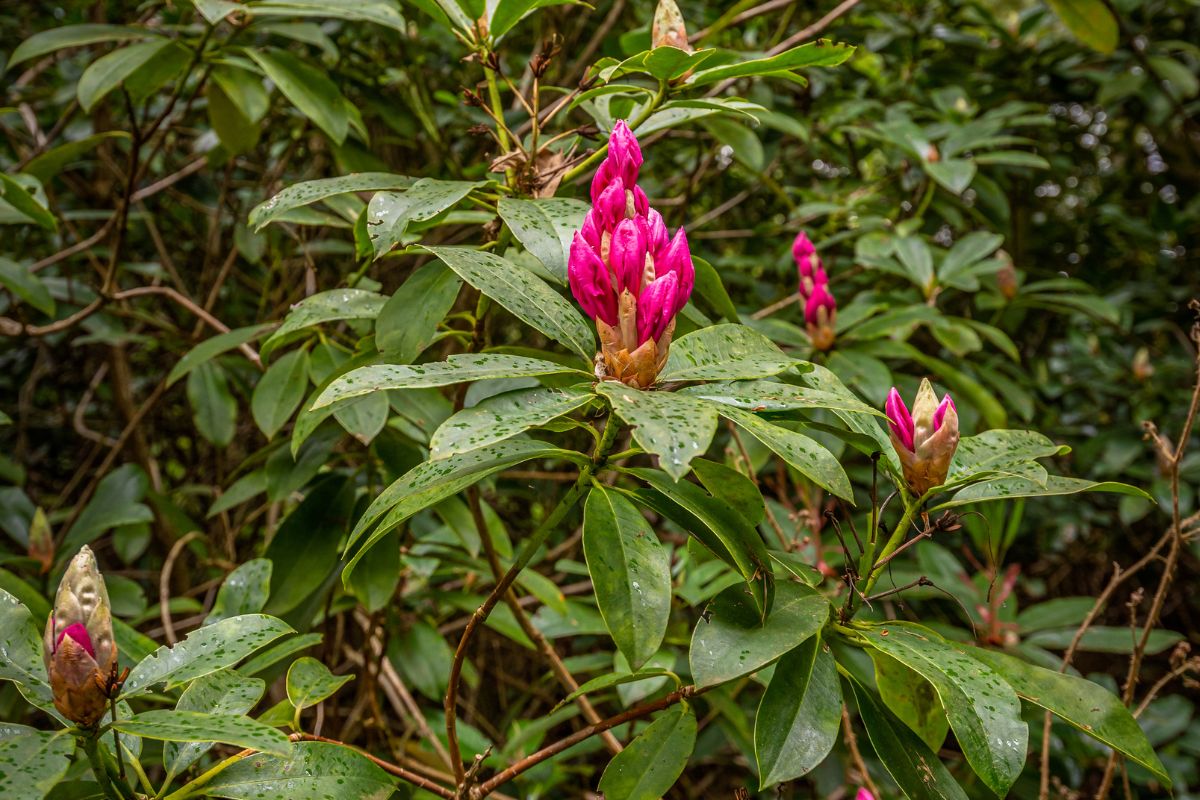
If your rhododendron is not blooming, it could be due to many factors, including frost damage, lack of sunlight, wrong timing of fertilizer, bud blast fungus, etc.
If your plant has formed buds and then turns brown, frost is usually the cause. If it produces buds but does not flower well, it is caused by insufficient sunlight.
How to Fix Them
- Save opening buds with fleece or plant flowering varieties of rhododendron later to avoid frosted buds.
- If flower buds refuse to form, some of its species take several years to flower; so, you probably need to be patient for them to become ten years old, especially for large-leaved varieties.
- If you are growing your plant in a sheltered spot, it will not bloom well, so it will be best to relocate it to a sunnier position.
- Stop fertilizing in June rather than encourage blooms; it produces more leaves.
- Bud blast fungus doesn't have a remedy; better to destroy the worst affected plants to avoid spreading the disease.
4. Shredded or Broken Leaves
If your rhododendron is shredding or experiencing broken leaves, it is a clear sign of wind damage. If the leaves of your plant are huge, the more protection they require from the wind.
Varieties like Rhododendron hodgsonii and kesangiae are large-leaved species with the slightest wind-resistant leaves.
How to Fix Them
- You can go for smaller leaf varieties with more wind resistance.
- Cover with artificial shelter like rokolene during plants' tender age for those with lesser wind resistance.
- Go for tough rhododendrons as a screen on the windward side to provide shelter for others.
- Grow shelter belts of tough, quickly established shrubs.
5. Sunburn on Leaves
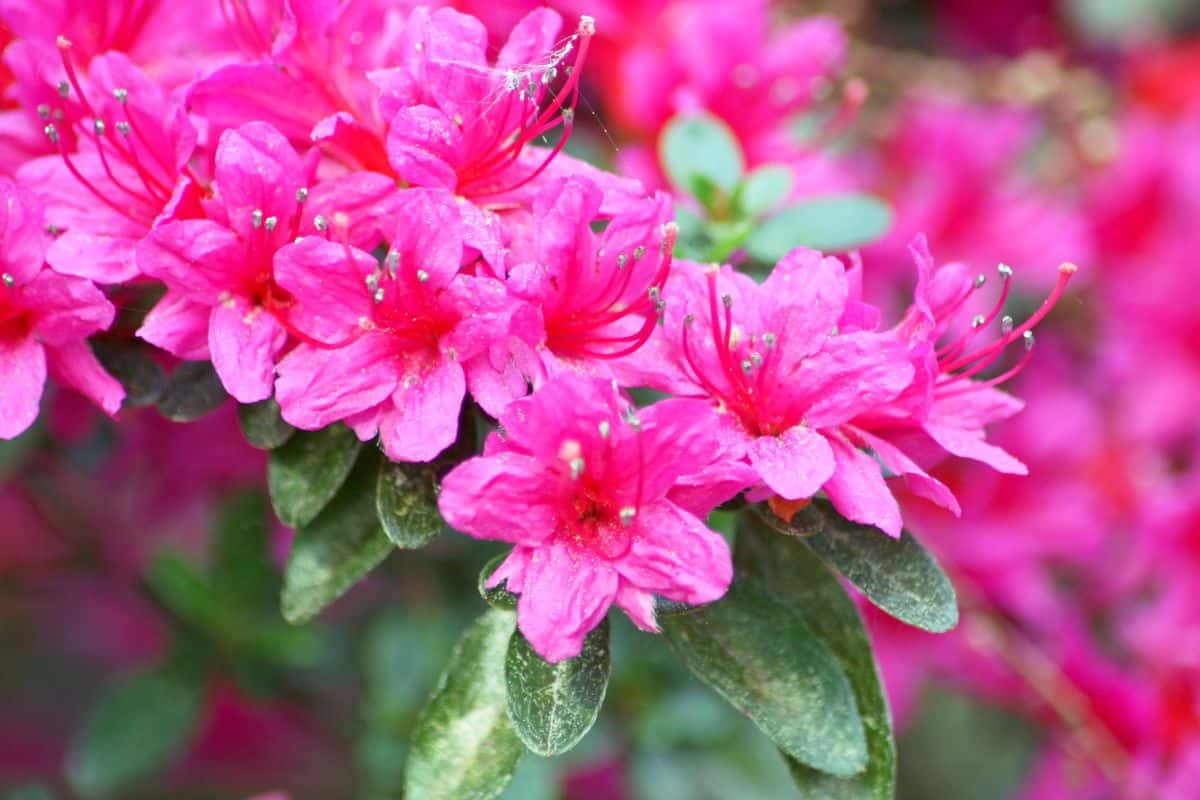
If your rhododendron leaves start changing to bright yellow, it is a clear sign of mild sunburn, while a severe case of sunburn can burn the leaves to a crisp. This situation is quite common after hot summers in most regions.
How to Fix Them
- It's pretty simple!!! Relocate sunburned rhododendrons to a shadier location if the issue continues.
6. Root Rot
Also known as Phytophthora cinnamon, root rot is a root disease often deadly and rapid in killing a plant. It is a sign of root rot if you notice an eventual collapse in the growing season, maybe of the whole plant or several plants in one section of the garden.
Once you inspect the roots, cut into the plant's stem, and discover the disease is turning deep brown, it is a sign of root rot.
The disease is most commonly a result of poor drainage and warm or hot soil temperatures, especially in hot summers and areas with an inadequate drainage system.
How to Fix Them
- Make sure you keep the growing area well prepared using coarse organic and inorganic material to enhance free drainage and maintain good aeration in the soil.
- You can try freshly composted bark, which offers some root-rot resistant features.
- Be sure the soil where your rhododendrons are grown will not be grazed or overcrowded by people or animals.
- You can grow them in the shade and mulch them in warmer regions to keep the soil temperature low. In Germany, several rhododendron varieties are grafted, enhancing tolerance or inadequately drained soils.
- In places with heavy clay soils, the best method is to always plant over soil level, whether in raised beds or by mulching up the soil surrounding the root.
7. Brown Spots on Leaves

Whenever you notice brown spots on the leaves of your rhododendron plant, it is caused by many fungi attacks on your plant.
Even though they don't look too attractive, brown spots will not overly affect the plant's growth. In other words, it is not as dangerous as other problems on this list.
How to Fix Them
- You can remedy them by tidying up the surrounding areas of your plant and trying to cut back a few branches to minimize overcrowding and improve airflow.
Conclusion
Rhododendrons are one of the most popular plants you can enjoy if you try to avoid these mistakes.
But given that mistakes can occur, whenever you discover your errors, you can apply the laid down solutions above as quickly as possible to revive them. Happy Gardening!!!




